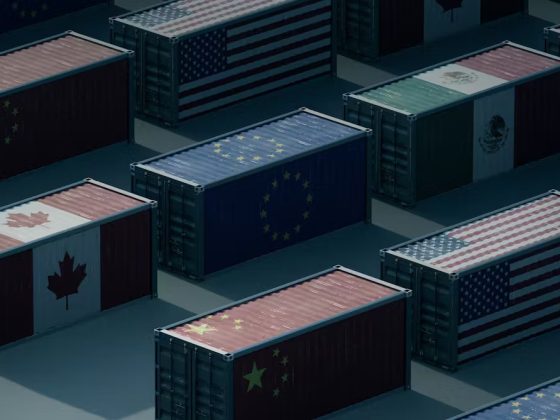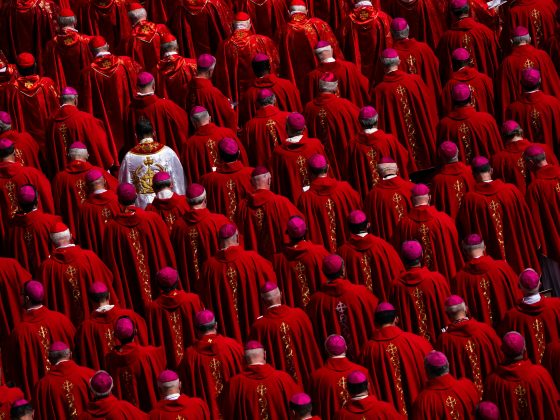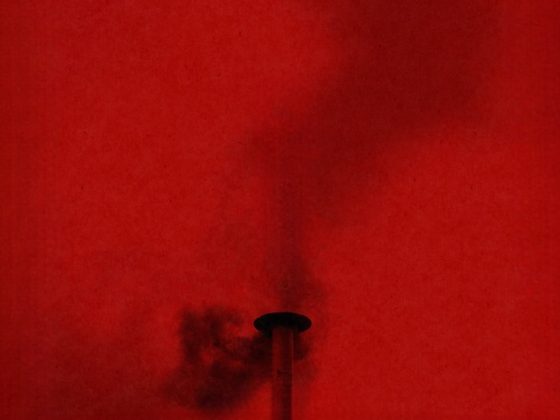The 2008 financial crisis continues to plague the world economy and our politics. It’s also messing with how we understand our narratives of global integration. Until recently, going global implied exuberant stories about one-world connectivity and technocratic togetherness. Now, it’s the other way around: the stories of our times are consumed with collapses, extinctions and doom. It’s a playbook for nativists, who see interdependence as a recipe for catastrophe.
Our big narratives were once capable of more nuance than the pendular swing from euphoria to dysphoria. For every 18th-century Enlightenment story of hope, there was a shadow of decline; in the 19th century, liberals had to joust with conservative and radical prophets of demise. Some even saw crisis as an opportunity. Influenced by Karl Marx, the Austrian economist Joseph Schumpeter in 1942 made a virtue out of ruin. There could be something creative about bringing down tired old institutions. The late German-born economist Albert O Hirschman thought of disequilibria as a potential source of new thinking. In 1981, he distinguished between two types of crisis: the kind that disintegrates societies and sends members scrambling for the exits, and what he called an ‘integrative crisis’, one in which people together imagine new ways forward.
Witnessing the catastrophes of the Great War and the rise of fascism in Europe imparted to Schumpeter and Hirschman a certain style. In spite of the horror and gloom of the 1930s, the Second World War had also prompted the hope that crises could be righted and societies could pull out of tailspins. People could manage economies and avoid ruinous cycles. When that war was over, the victors went on a global spree. They sent advisors and investors across Asia, Africa and Latin America to promote capitalist modernisation. The American economist who epitomised the bravura of the age, Walt W Rostow, wrote in 1960 of ‘the blessings and choices opened up by the march of compound interest’. So-called ‘third world’ clients often disliked Rostow’s script, but they shared his sense that the future was theirs to write.
Even in bad times, proponents of integration had to respond to rival appeals with renewed stories. When Western capitalism gave way to the malaise of the 1970s, the sunny, postwar stories clouded over. Dismal scientists fretted about collective action problems, social rigidities and free-riders. Others, however, saw this as moment of opportunity. This was a case, a partial one anyway, of Hirschman’s integrative crisis. For the developing world, here was a chance to right historic wrongs and draft a New International Economic Order. The gloom also bolstered cooperative management and multicultural exchange. While the idea of regulating the marketplace got sidelined, governments did restrain the furies of competition in other domains. Armed with dismal predictions about exhausted resources and overpopulation, environmentalists at the First Earth Summit in Stockholm in 1972 advocated conservation and common purpose. In time, we got accords to cut chlorofluorocarbon use. Nuclear talks went into a permanent state of summitry to create a world arms-control regime. Eventually, there was a treaty to do something about our carbon addiction. The humanitarian, arms-control and ecological agreements now in peril have their foundations in legitimising the story of deepening integration at a time when world affairs were so uncertain.
The end of the Cold War in 1989 marked a break in the storytelling habits of global integration. Without rivalry from the East or challenges from the South, the big narratives of progress got flattened around a single plot. Talk of a new world economy gave way to the Washington Consensus; socialist integration lost its age-old appeal. The American political scientist Francis Fukuyama caught the Zeitgeist with his essay ‘The End of History?’ (1989) – though everyone forgot the question mark. The fall of the Berlin Wall and the triumph of neoliberalism launched a new story that championed market purity, visionary entrepreneurs and the liberating power of gadgets for a world ruled by a global elite nicknamed ‘Davos Man’. In The World Is Flat: A Brief History of the Twenty-First Century (2005), the American journalist Thomas Friedman celebrated the glories of free trade, open communications and the bounty of global supply chains. There was, as pundits used to say with glee, only one game in town. Perhaps the last rendition of this have-it-all style was Sheryl Sandberg’s book Lean In (2013), a narrative based on her own manicured story of leadership at Google and Facebook.
There were challengers to this flat-world plot. It got no traction among peasants of Chiapas, demonstrators at the Battle of Seattle and scientists labouring behind the Intergovernmental Panel on Climate Change, who fought for alternative stories, pointing to dislocation, unfairness and spiking carbon emissions. But the power of flat-world storytelling asphyxiated the nay-sayers.
That is, until a financial crisis, the spectacle of crumbling glaciers and scenes of an Arab Spring gone horribly awry ended the triumphalist bender. Suddenly, the euphoric style gave way to a chorus of dysphoria.
Now, even the most sophisticated stories about capitalism and democracy see the two as threatening to part ways. The French economist Thomas Piketty’s Capital in the Twenty-First Century (2013) put the spotlight on the vice of inequality and slow growth. It also advanced a wider claim: in historical perspective, the rapid growth of 1930 to 1975 is the aberration. By this analysis, we ought to see that the slow growth, stagnation and inequality of our age is the historical norm; what needs explaining is the prosperity of the post-1945 decades. Crashed: How a Decade of Financial Crises Changed the World (2018) by the British historian Adam Tooze also leaves a sinking feeling: the 2008 crisis couldn’t even fail right! Instead, it left the world awash in more debt and concentrated economic power.
Piketty and Tooze didn’t set out to explain how humanity climbed onto the doomsday treadmill. They do, however, contribute to a gathering impression of a new normal, one in which disaster becomes the default, and unequal, sluggish growth – the rule. The final section of Piketty’s book details feasible correctives to market fundamentalism. Despite the progressive vacuum that handed governments around the world to Right-wing nativists, Piketty’s discussion of possible reforms didn’t generate much discussion. If Schumpeter’s work pointed to crises as opportunities for movement and progress, Tooze tells the story of an establishment refusing to learn from the crisis it made. The real failure then of that financial mayhem was that its makers couldn’t see how their heroic story of decontrolled Homo pecuniaria was responsible for the crisis – and instead compelled bystanders and taxpayers to pay the price.
The beneficiaries of the doomsday narratives have been snarling nativists and populists, propped up by Fox News sages such as Jonah Goldberg and Yuval Levin who champion the old decline story: a dirge for ‘Western’ civilisation. The New York Times’ David Brooks weeps about America’s inescapable demise. For Donald Trump in the US, Jair Bolsonaro in Brazil and Viktor Orbán in Hungary, there is only one, stark, self-serving choice: cosmopolitan catastrophe or rescue, with themselves as uniquely mandated to liberate us from an apocalypse designed by global plutocrats. Meanwhile, liberals and cosmopolitans feud over whom to blame – thereby further fuelling the crisis consensus.
It’s important to recognise one of the catastrophist’s rhetorical moves. Stories of doom thrive on turning a tension into an incompatibility. A tension implies two forces at odds – like hot and cold, like price stability and jobs, like helping strangers and assisting neighbours; while they pull in different directions, they can be mixed. Earlier big narratives used to explain choices in terms of tension and unstable compromise. In the 1950s and ’60s, debates focused on how much the developing world could advance while being part of a wider global economy. A decade later, the tension was how to co-manage a troubled global commons.
Nowadays, the chorus of catastrophe presents differences as intractable and incompatible, the choice between them zero-sum. It’s globalism or ‘nation first’, jobs or climate, friend or foe. The model is simple: earlier leaders muddled, dithered, compromised and mixed. In their efforts to avoid hard decisions, they led the nation to the edge of disaster.
Pessimism helped exorcise post-1989 triumphalism; Piketty and Tooze are right about structural features of inequality and how the makers of catastrophe became its beneficiaries. But we also need to see how the consensus of catastrophe that straddles the ideological spectrum – but grows more dire and menacing as one approaches the extremes – favours the politics of the strong man glaring down the nation-doubters.
The alternative is not to be wistful about flat-world narratives that find solace in technical panaceas and market fundamentalisms; the last thing we need is a return to the comforts of lean-in fairy tales that rely on facile responses to a complicated world. To learn from collapses and extinctions, and prevent more of them, we need to recover our command over complex storytelling, to think of tensions instead of incompatibilities, to allow choices and alternatives, mixtures and ambiguities, instability and learning, to counter the false certainties of the abyss. If we don’t, it really will be too late for many people and species.![]()
Jeremy Adelman
This article was originally published at Aeon and has been republished under Creative Commons.









